I had an amazing chance to visit a vineyard and not just any vineyard, Millbrook Vineyards & Winery located 26 Wing Road, Millbrook, NY 12545. 1121. Upon my arrival I was greeted warmly and I was welcomed with warm arms. Millbrook is apart of the Hudson Valley AVA, which is one of the newest AVA’s established in New York State. The techniques that they use are standard industry procedures. They harvest grapes at brix level between 21% and 23% because it gives them the yield 12% to 13% on their wines. Everything is hand harvested straight to the crush pad, then inflate bladder which is pushing the juice out from the grapes.
There are multiple grape varieties grown: the white grapes are: Traminette, Riesling, Chardonnay, Tocai Friulano, and Pinot Grigio (which is not grown there, but in California). These grapes are pressed, and then brought inside for cold fermentation and this process is slower without the addition of yeast.Unlike the white grapes the red grapes are all grown there and they are: Pinot noir, and Cabernet Franc. The red grapes are harvested just the same but they incorporate the crushed grapes with the juice to perform maceration (23 days to 7 weeks) depending on what they want it to look like. The rose process goes through saignee which is also known as the bleeding process which goes through one press. Oaking smooths out rough tannins and polished acicity. If oaked it goes to the oak barrel after fermentation. Partially oakes shas one acreage which contains Tocai Friulano which is located on their (Lollipop Hill) and oaked for 6 months lightly. All their reds are fully oaked. Fully oaked, fermented, and straight from crushed to barrel (for 8 months) are their reserved chardonnays. Every single cork is natural from the bark of cork oak trees. TCA (Trichloroanisole) is somethings that detects a taste of “corkiness.”
Special Attributes AVA, Millbrook is known for hudson Valley Cabernet Franc. The owner is John Dyson, and he founded HVCF. Pioneer of Farm Winery Act Passed in 1976 which has helped aging farm to winery. This gives additional tax breaks.
The importance of barrel aging in that there is a combination of mostly French and American oak (mostly neutral oak) which is more than three years old and less than ten (no longer imparting flavor into wine). Barrel aging also helps malolactic fermentation and converted into lactic acid which is for a mouth feel (what you taste v.s what your brain recognizes. Battonage is the process of starting lees. This is a special metal baton that stirs the lees bag into the aging wine. Battonage and lees are important for malolactic and malolactic is second fermentation. This could be a base wine where you put into barrel to age and add flavors.

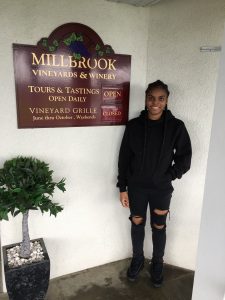
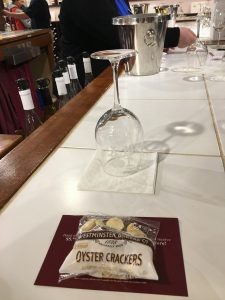
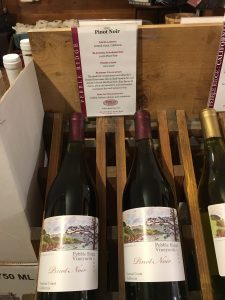
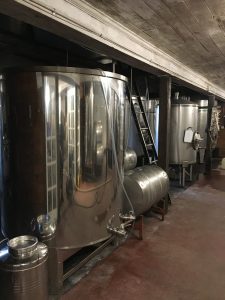
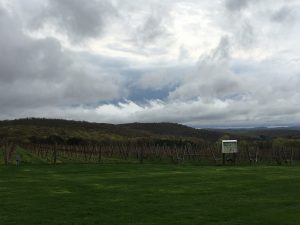



I like that they expressed information about saignee. Though I have had wines made in the manner I have yet to see the process in action. Soon, I hope that will change.